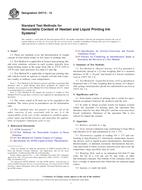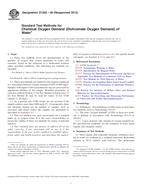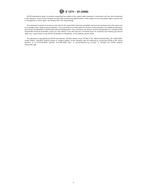1.1 This test method describes the procedure for rapidly determining the percent compaction and the variation from optimum moisture content of an in-place soil for use in controlling construction of compacted earth. These values are obtained by developing a three-point compaction curve at the same moisture content as the in-place soil without knowing the value of the moisture content. The soil used for the compaction curve is normally the same soil removed from the in-place density test. For the remainder of this designation, this test method will be referred to as the rapid method.
1.2 This test method is normally performed for soils containing more than 15 % fines (minus No. 200 sieve size).
1.3 When gravel-size particles are present in the soil being tested, this test method is limited to a comparison of the minus No. 4 sieve-size fraction of the in-place density material to a laboratory compaction test of minus No. 4 sieve-size material (Method A of Test Methods D 698). Subject to the limitations of Practice D 4718, this test method is also applicable to comparisons of other sieve-size fractions (for example, Method C of Test Methods D 698) or other compactive efforts (for example, Test Methods D 1557) if new moisture adjustment values are determined (see 6.1 and Appendix X2).
1.4 The values stated in SI units are to be regarded as the standard.
1.4.1 The use of balances or scales recording pounds of mass (lbm), or the recording of density in pounds of mass per cubic foot (lbm/ft³) should not be regarded as nonconformance with this test method.
1.5 All observed and calculated values shall conform to the guidelines for significant digits and rounding established in Practice D 6026 unless superseded by this standard.
1.5.1 The procedures used to specify how data are collected, recorded or calculated in this standard are regarded as the industry standard. In addition they are representative of the significant digits that generally should be retained. The procedures used do not consider material variation, purpose for obtaining the data, special purpose studies, or any considerations for the user's objectives; it is common practice to increase or reduce significant digits of reported data to be commensurate with these considerations. It is beyond the scope of this standard to consider significant digits used in analytical methods for engineering design.
1.6 This standard does not purport to address all of the safety problems, if any, associated with its use. It is the responsibility of the user of this standard to establish appropriate safety and health practices and determine the applicability of regulatory limitations prior to use. For specific hazard statements, see Section 9.
Product Details
- Published:
- 02/01/2008
- Number of Pages:
- 9
- File Size:
- 1 file , 150 KB
- Redline File Size:
- 2 files , 280 KB


